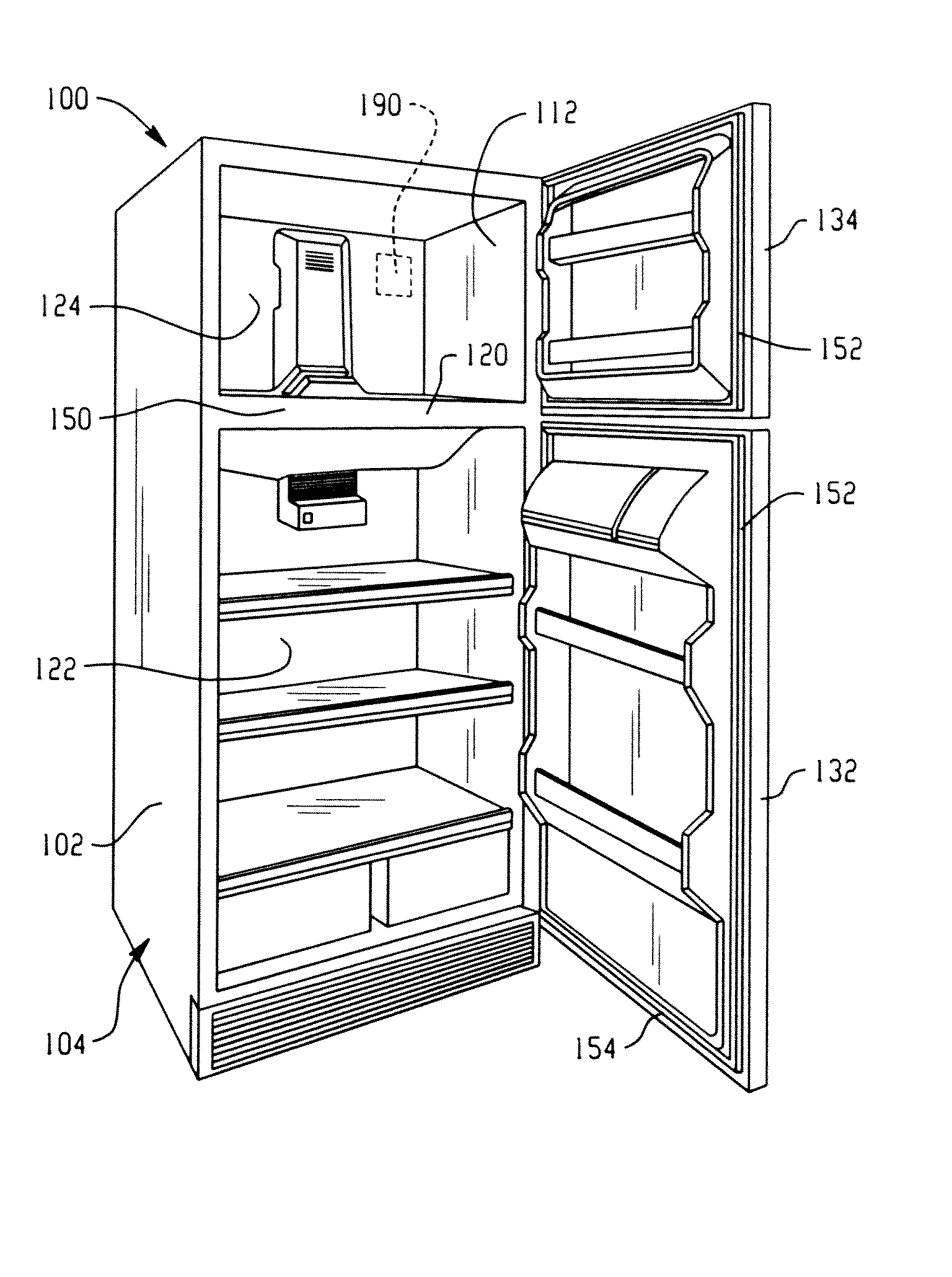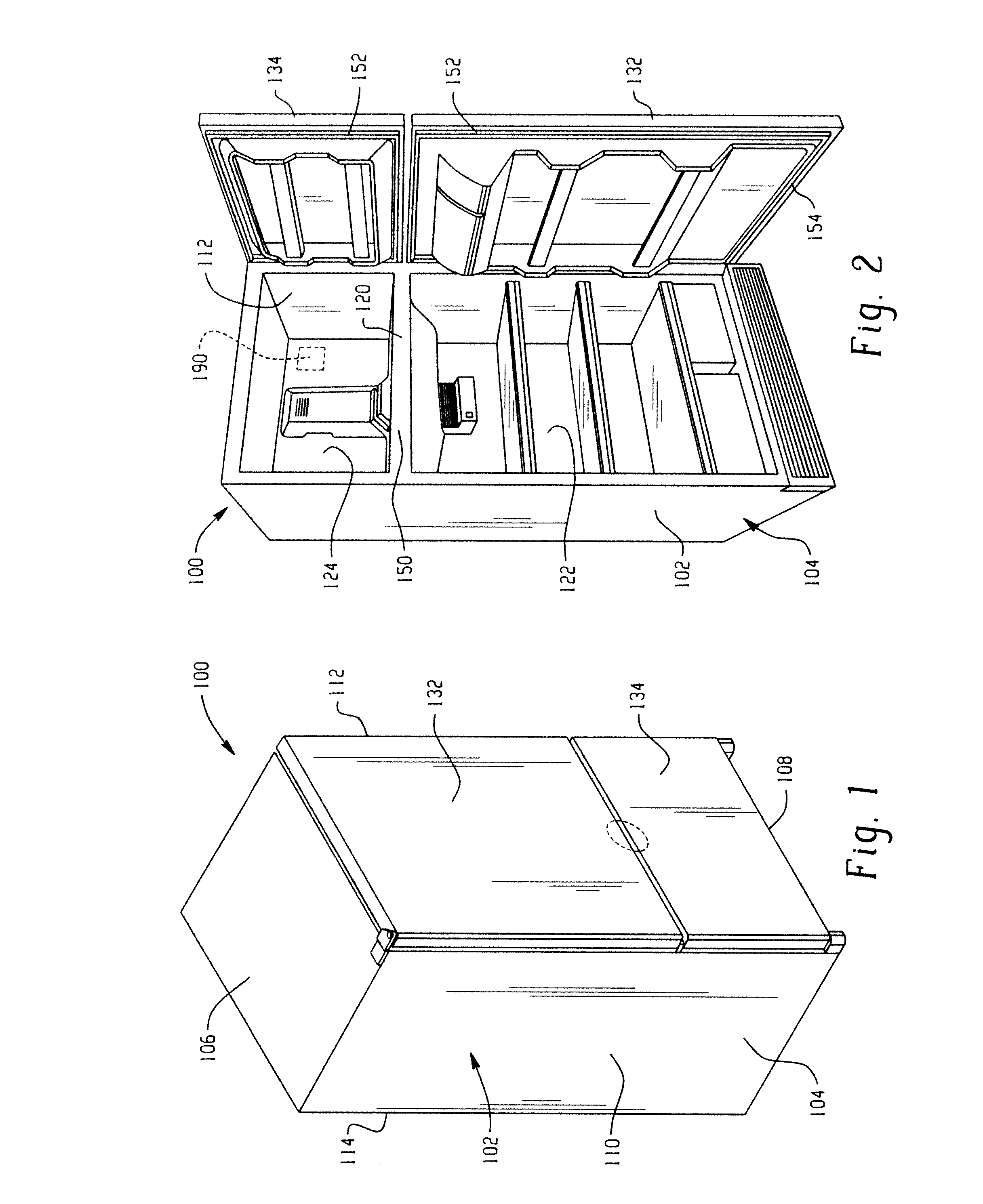Demand response mullion sweat protection
a demand response and mullion technology, applied in the field of demand response, to achieve the effect of low cost and low cos
- Summary
- Abstract
- Description
- Claims
- Application Information
AI Technical Summary
Benefits of technology
Problems solved by technology
Method used
Image
Examples
Embodiment Construction
[0027]FIGS. 1-4 illustrate various models of refrigerators 100, and although the various models may have different features, for purposes of the present disclosure, many of these detailed features are not pertinent. Thus, these various types of refrigerators are all common with respect to including at least one cooled storage compartment, and preferably first and second cooled storage compartments generally referred to as a fresh food storage compartment and a freezer compartment. Therefore, like reference numerals will be used to identify like components throughout these FIGURES for ease of identification.
[0028]More particularly, the refrigerator 100 has a cabinet 102 that includes an outer case, shell, or housing 104 having a top wall 106, bottom wall 108, sidewalls 110, 112, and a rear or back wall 114. Typically, the housing is formed of a thin metal material and the walls are thermally insulated. A dividing wall 120 separates the refrigerator into a fresh food storage compartme...
PUM
 Login to View More
Login to View More Abstract
Description
Claims
Application Information
 Login to View More
Login to View More - R&D
- Intellectual Property
- Life Sciences
- Materials
- Tech Scout
- Unparalleled Data Quality
- Higher Quality Content
- 60% Fewer Hallucinations
Browse by: Latest US Patents, China's latest patents, Technical Efficacy Thesaurus, Application Domain, Technology Topic, Popular Technical Reports.
© 2025 PatSnap. All rights reserved.Legal|Privacy policy|Modern Slavery Act Transparency Statement|Sitemap|About US| Contact US: help@patsnap.com



